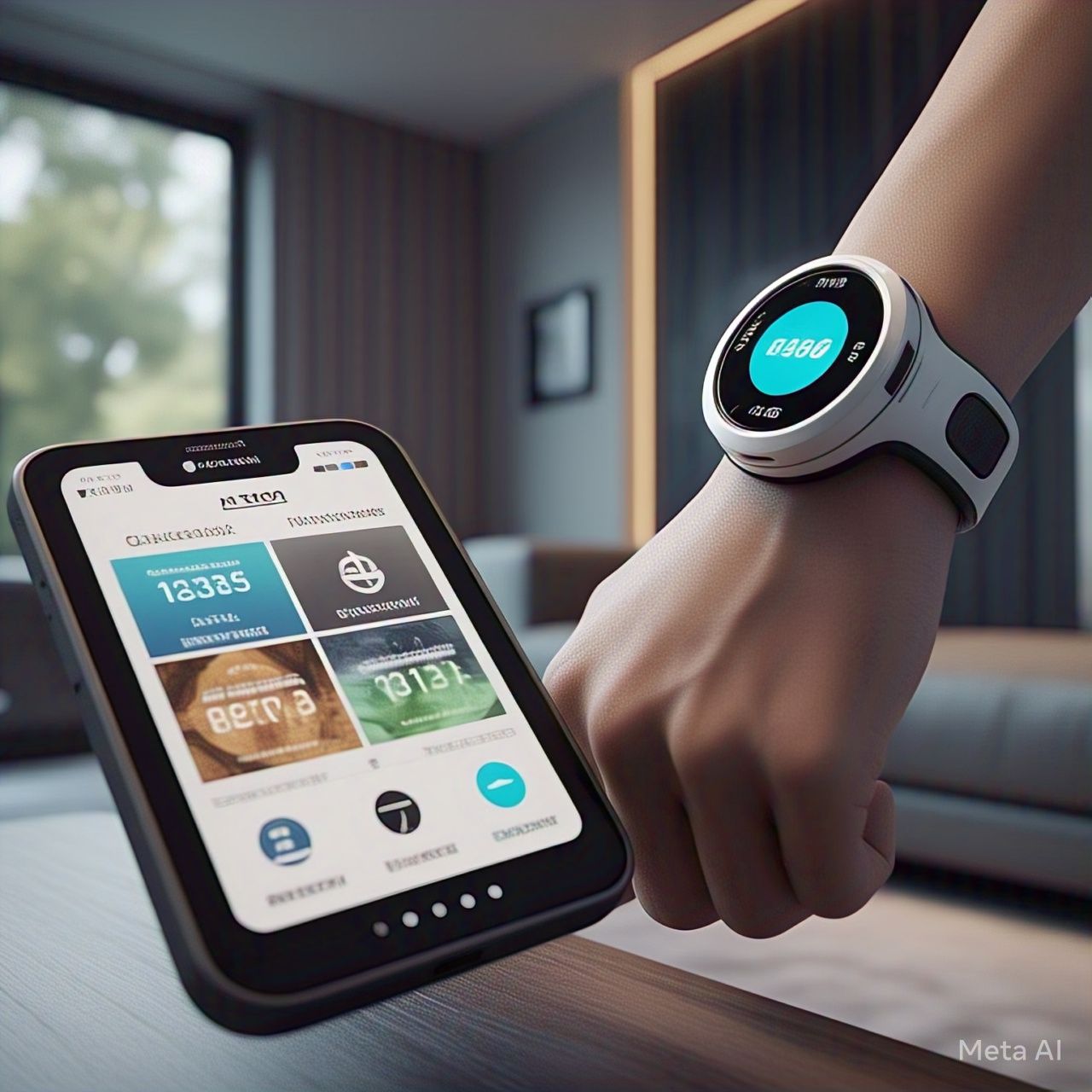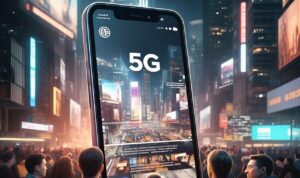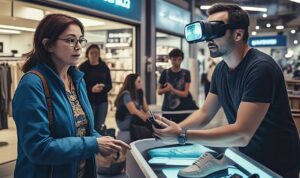Wearable technology has rapidly evolved, transforming how we interact with the digital world. From smartwatches and fitness trackers to augmented reality (AR) glasses and smart rings, wearables are integrating seamlessly with mobile applications to provide users with real-time data, enhanced connectivity, and personalized experiences.
With the rise of 5G, artificial intelligence (AI), and the Internet of Things (IoT), the integration of wearable devices with mobile apps has become a game-changer across various industries, including healthcare, fitness, finance, entertainment, and smart home automation. As the demand for convenience and efficiency grows, businesses and developers are continuously improving wearable-compatible apps to enhance functionality and user experience.
In this article, we will explore:
✔ The evolution of wearable technology
✔ How wearables integrate with mobile apps
✔ Key industries benefiting from wearable tech and app integration
✔ Challenges in wearable and mobile app connectivity
✔ Future trends in wearable tech and app development
The Evolution of Wearable Technology
Wearable devices have been around for decades, but recent advancements in AI, IoT, and sensor technology have accelerated their growth and adoption.
1. Early Wearable Devices
-
1970s-1980s: The first electronic wearables, such as calculator watches, emerged.
-
1990s: Wearable computers were developed, primarily for military and industrial use.
2. The Rise of Smart Wearables
-
2010s: The launch of fitness trackers, smartwatches, and wireless earbuds revolutionized the market.
-
2015: Apple released the Apple Watch, further popularizing smartwatches.
-
2016-2019: AR and VR wearables, such as the Oculus Rift and Microsoft HoloLens, became widely available.
3. The Modern Wearable Era (2020-Present)
-
AI-powered wearables can analyze health data, recognize gestures, and integrate with smart home systems.
-
5G connectivity allows for real-time data transmission between wearables and mobile applications.
-
Smart rings and biometric wearables offer new ways to track and authenticate user data.
How Wearables Integrate with Mobile Apps
Wearable technology is designed to function in sync with mobile applications, creating a seamless and interactive experience for users. Here’s how this integration works:
1. Bluetooth & Wi-Fi Connectivity
Most wearables connect to mobile apps via Bluetooth Low Energy (BLE) or Wi-Fi, enabling real-time data synchronization.
🔹 Example: Fitbit devices sync with the Fitbit mobile app via Bluetooth to update step counts and heart rate data.
2. Cloud-Based Data Processing
Wearables collect user data and send it to cloud storage, where mobile apps analyze and visualize it for users.
🔹 Example: Apple Health and Google Fit store fitness data in the cloud, allowing users to access it from multiple devices.
3. AI-Powered Smart Assistants
Wearables integrate with AI-driven mobile apps to provide voice control, personalized insights, and smart recommendations.
🔹 Example: Google Assistant on Pixel Watch allows users to control smart home devices through voice commands.
4. Biometric Authentication & Security
Wearable tech enhances security by integrating fingerprint scanning, facial recognition, and heartbeat authentication with mobile apps.
🔹 Example: Samsung Galaxy Watch can authenticate Samsung Pay transactions using biometric sensors.
5. IoT and Smart Home Integration
Wearables connect with IoT-enabled mobile apps to control smart home systems, unlock doors, adjust lighting, or monitor security cameras.
🔹 Example: Apple Watch with HomeKit enables users to control smart thermostats and lighting systems from their wrist.
Key Industries Benefiting from Wearable Tech & Mobile App Integration
1. Healthcare & Fitness 🏥
Wearables have transformed healthcare and fitness tracking by enabling real-time health monitoring and preventive care.
🔹 Examples:
-
Smartwatches (Apple Watch, Garmin, Fitbit) track heart rate, ECG, and blood oxygen levels.
-
Continuous glucose monitors (Dexcom G6, FreeStyle Libre) help diabetics manage their blood sugar levels via mobile apps.
-
Sleep tracking wearables (Oura Ring, Whoop Strap) provide personalized sleep insights and improvement recommendations.
2. Sports & Athletics ⚽
Professional athletes and fitness enthusiasts use wearables to optimize performance and prevent injuries.
🔹 Examples:
-
Smart insoles (Nike Adapt BB, Digitsole) track foot pressure and running patterns.
-
Wearable motion sensors (Athos, Catapult) analyze movement to improve sports techniques.
3. Finance & Contactless Payments 💳
Wearables with NFC (Near Field Communication) technology enable secure, tap-to-pay transactions.
🔹 Examples:
-
Apple Pay and Google Pay on smartwatches allow users to make contactless payments.
-
Biometric smart rings (Token, Oura Ring) can be used for authentication and digital payments.
4. Entertainment & Media 🎧
Wearable devices provide hands-free music control, immersive AR/VR experiences, and real-time notifications.
🔹 Examples:
-
Meta (Oculus) Quest VR headsets offer an immersive gaming and entertainment experience.
-
Bose Frames (AR audio glasses) provide directional audio for music and navigation without headphones.
5. Workplace Productivity & Remote Work 💼
Wearables improve workplace efficiency and help remote workers stay connected.
🔹 Examples:
-
Smart glasses (Microsoft HoloLens, Google Glass) assist in virtual collaboration and remote support.
-
Fitness wearables help corporate wellness programs by tracking employee health metrics.
6. Smart Homes & IoT 🏠
Wearables integrate with mobile apps to control smart locks, lights, security cameras, and home automation systems.
🔹 Examples:
-
Amazon Echo Frames allow users to control Alexa-powered smart home devices.
-
Smartwatches with IoT integration can adjust room temperature or security alarms remotely.
Challenges in Wearable & Mobile App Integration
Despite the rapid growth of wearable tech, several challenges hinder seamless integration with mobile apps:
1. Battery Life Issues 🔋
Wearables require frequent charging due to continuous data tracking and wireless connectivity.
🔹 Solution: Advancements in low-power processors and solar charging may extend battery life.
2. Data Privacy & Security Risks 🔐
Wearables collect sensitive data, raising concerns about hacking, unauthorized access, and data breaches.
🔹 Solution: End-to-end encryption, biometric authentication, and GDPR compliance are crucial for security.
3. Compatibility & Ecosystem Fragmentation 📱
Not all wearables are compatible with all mobile operating systems, causing integration issues.
🔹 Solution: Manufacturers should adopt universal standards (e.g., Bluetooth, API frameworks) for cross-platform compatibility.
4. High Costs & Adoption Barriers 💰
Advanced wearable devices remain expensive, limiting their adoption among budget-conscious users.
🔹 Solution: More affordable, entry-level wearables could make the technology accessible to a wider audience.
Future Trends in Wearable Tech & Mobile Apps
🔹 AI-Powered Wearables – Smartwatches and rings will use AI to detect health conditions and predict illnesses.
🔹 Smart Clothing & Wearable Sensors – Wearable fabrics will monitor vital signs, posture, and hydration levels.
🔹 AR Glasses & Metaverse Integration – Augmented reality (AR) glasses will merge digital and real-world experiences.
🔹 Brain-Computer Interfaces (BCI) – Future wearables may allow users to control devices using brain signals.
🔹 5G-Powered Real-Time Data Processing – Wearables will become faster and more responsive with 5G connectivity.
Conclusion
The integration of wearable technology with mobile applications is revolutionizing multiple industries, enhancing health tracking, productivity, entertainment, and smart living. As advancements in AI, 5G, and IoT continue to evolve, wearable tech will become smarter, more efficient, and more indispensable in daily life.
Businesses and app developers must embrace wearable innovation to create seamless, personalized, and data-driven mobile experiences for the future.






